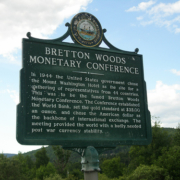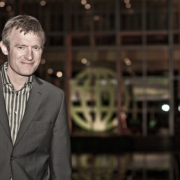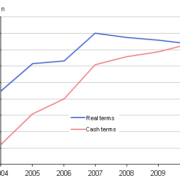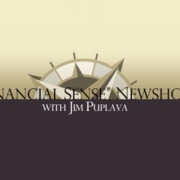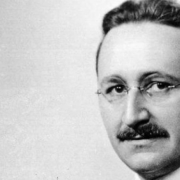Having recently sold my food business, life is moving at a much slower pace, which gives time for thought and reflection before I undertake my next venture or ventures. One thought was: what did I learn from academia that I applied to my business dealings?
I concluded that my behaviour was moved by my instinct and alertness to opportunity, and my ability to provide strategic leadership to people and give them vision. With my actions over the years I was always Hayekian in outlook.
I could not say for sure if my reading of Hayek made me behave and structure my business as I did, or if I just did it because common sense always told me that local management, with profit and loss responsibility handed down to the smallest units possible, and as little reliance on the central head office function as possible, was the only way forward. In fact, to the day I sold, I never did have a head office. This perplexed bankers, accounts etc, but no one else.
I also used to say to my people, “if the man from Mars (read: management consultant, banker, accountant, anyone who’s good at spreadsheets and sits at a desk) came down and looked at our business, he would say we are mad”. We would sometimes send three vehicles to deliver fish down the same road to different people at different times of the day — we should surely consolidate these deliveries, and send one vehicle only. Also, we would buy some of the same species of fish from all the ports of the land, indeed from all over the world, and but not consolidate our buying power. “You are mad”, the Martian would say, “you are running an inefficient business”. To this I’d respond that the proof is in the bottom line of the P&L. We made more money than any of our competitors, by far. So do not worry, I told my people, with reason and conviction I knew our approach was right.
The Keynesian approach would be the opposite of the Hayekian, and would be just what my hypothetical man from Mars would advocate. The aggregation for efficiencies by central agents would have destroyed my business, as I saw happen with my major competitors once the spreadsheet whallas got involved.
Dispersed knowledge, collected locally and applied intelligently, told us that our customers were prepared to pay more for very convenient just-in-time deliveries. Some of our customers opened up their business for a lunch service that required delivery early in the morning; others were evening service only. Some were open 24 hours; others were night only. So we catered to all, as opposed to saying “we are only in this area from time X to time Y, on such and such a day”. This meant vans going out 1/4 full and “inefficient”, but up to three times a day with a higher margin payload delivering up more profit.
Dispersed knowledge, collected locally and dealt with intelligently, told us that buying wild-hunted local fish from various ports and harbours, and selling it locally having bought at different cost prices (rather than using our buying power to leverage the best deal with the cheapest central seller) actually meant we could sell fish to the local restaurant and hotel marketplace for more margin and hence more profit was delivered to the P&L.
The aggregating and centralising “Keynesian” approach would have been the end for us.
One influence that I must also add to this little reflective piece is Michael Oakeshott. His On Human Conduct has probably had more influence on me than Human Action by Mises. This being an economics-orientated web site, I think this is the first time I’ve mentioned the great political philosopher.
Tradition, intimation, and latent knowledge and talent are often hard to observe. Cooking a recipe is following a simple set of instructions, just like cutting fish. Some of us can perform only moderately well (even with lots of training), and others, like Gordon Ramsey, outstandingly. This talent is latent and cannot be written down and copied. It can’t be rationalised. It is the aim of most of the world’s all-encompassing philosophies to be rationalistic in outlook. Applied to business, there were many skills I could not objectify that key members of my staff displayed. If they produced a profit, I left alone. This is not to say you should not always attempt to fully understand what is going on, and why people do things in certain ways; you always should. My Oakeshottian contribution was to exhaust this process of understanding, only gently change if it was deemed wrong by me, and love and cherish it if it was a little bit off piste and entrepreneurial. This is why my bottom line was always bigger than my competitors.
Oakeshott famously criticised his LSE contemporary Hayek by saying that his political philosophy, as expounded in The Road to Serfdom, of less planning was just as much a rationalist ideology as the central planners he cautioned against, even if it may be a better approach. Irrationality, “quirkiness”, hidden skill, and entrepreneurial talent are all things that do not fit in the box. These I always sought to preserve and encourage in the business. So my rational leadership and vision was always tempered by respect for this insight of Oakeshott. This is also why I am a liberal philosophically, tempered with good doses of conservative wisdom and leanings.

